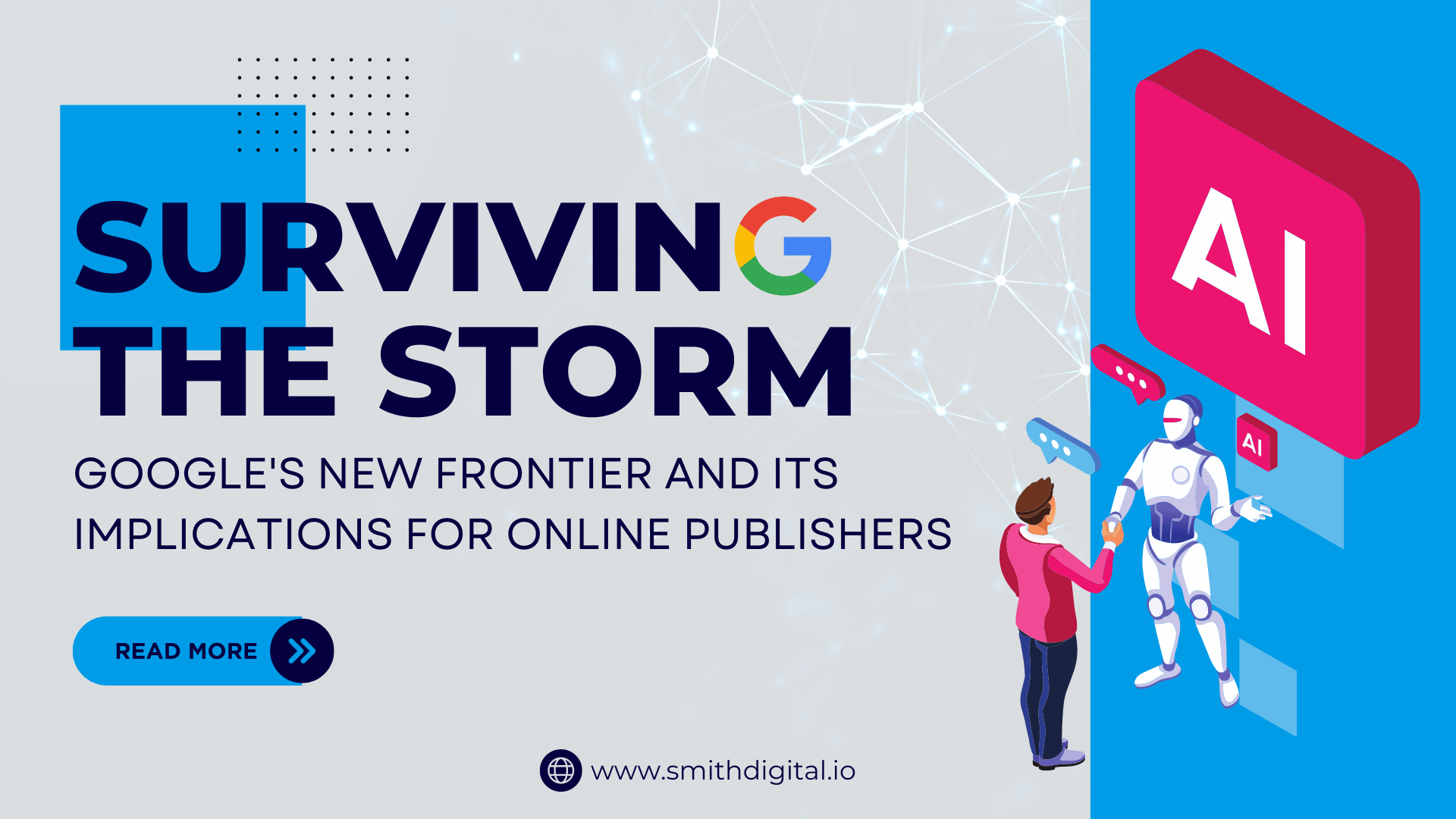Surviving the Storm: Google's New Frontier and its Implications for Online Publishers
In the digital world, change is the only constant, and no one embodies this better than Google, the reigning titan of search. With an undying...
%20(23).png?width=302&height=302&name=_SD%20web%20assets%202025%20(500%20x%20500%20px)%20(23).png)
4 min read
Marketing
:
Jan 30, 2024 9:47:41 AM
In recent developments, email marketers are facing a new set of challenges as industry giants Google and Yahoo tighten their policies on bulk emailing. This crackdown is a response to the growing concerns over spam, phishing, and email fraud that have plagued users for years. By enforcing stricter authentication standards and monitoring practices, these email service providers are setting a new benchmark for digital communication.
Marketers must now navigate these more complex regulations to reach their audience effectively, or risk having their messages relegated to the spam folder, or worse, blocked entirely. It is imperative for those in the field to understand the implications of these changes and the strategies required to maintain the efficacy of their email campaigns.
As we examine the potential impact on email marketing practices and the broader implications for online communication, one question emerges: How will businesses adapt to ensure their messages are heard in this heightened era of digital scrutiny?
To ensure the integrity and security of email communications, understanding the fundamental authentication protocols—SPF, DKIM, and DMARC—is crucial for bulk senders.
Implementing SPF (Sender Policy Framework) is the first step towards establishing a verified sender identity, allowing domain owners to specify which mail servers are permitted to send email on behalf of their domain.
DKIM (DomainKeys Identified Mail) goes further by providing a digital signature that confirms the authenticity of the email’s content. This signature ensures that the message has not been altered in transit.
Ensuring DMARC (Domain-based Message Authentication, Reporting, and Conformance) compliance is essential as it leverages SPF and DKIM to provide a clear policy on how to handle emails that fail authentication checks, thereby safeguarding the domain from abuse.
Maintaining a low spam report rate is crucial for bulk email senders to preserve their sender reputation and ensure continued deliverability. Gmail is set to implement a new policy that mandates senders to maintain a spam complaint rate of less than 0.3%.
To avoid deliverability issues, it’s essential to focus on the importance of engagement metrics. Engagement metrics, such as open rates and click-through rates, reflect how recipients interact with your emails and can indicate the relevance and value of your content.
High engagement typically correlates with a lower likelihood of being reported as spam. By monitoring these metrics, senders can make data-driven decisions to optimize their email strategies.
To monitor the spam report data from Gmail users, it is essential to register your domain with Google's Postmaster Tools. The registration process is quick and free, and once you have set up your account and Google has gathered email data, you will be able to view comprehensive spam report information in your Postmaster account.
This involves refining content, personalization, and tailoring the frequency of emails to align with user preferences, all of which contribute to reducing spam complaints and safeguarding email deliverability.
While managing spam report rates is essential, implementing one-click unsubscribes is a critical step for bulk email senders to ensure compliance with Google’s requirements and respect for user preferences.
This straightforward approach not only adheres to the guidelines but also plays a significant role in improving deliverability. When subscribers can easily opt-out, it reduces the likelihood of emails being marked as spam, thus maintaining a sender’s reputation.
Moreover, optimizing email content becomes more effective when it’s targeted to an audience that has chosen to stay engaged. By prioritizing user experience with accessible unsubscribe options, email marketers can refine their focus on delivering relevant and valuable content to those who are most interested, ultimately enhancing the efficacy of their email campaigns.
The tightening of email authentication standards by major email providers stems from a concerted effort to combat the persistent issue of spam, which not only degrades user experience but also poses significant security risks.
As Google and Yahoo implement stricter policies, they aim to enhance the integrity and security of their email platforms. These measures present challenges for email marketers, who must now navigate complex authentication protocols to reach their audiences effectively.
The implications for user experience are significant; by curbing spam, users can trust their inboxes more and engage with emails that provide genuine value.
Ultimately, the stricter policies protect users and elevate the quality of email marketing by enforcing best practices among senders.
The implementation of these changes will be a gradual process starting in February 2024, providing an opportunity for optimization and incorporating industry feedback.
Google's new authentication requirements are designed to improve the security and integrity of email communication. While users who send over 5,000 messages a day will be subject to specific rules, even those who send fewer than 5,000 messages will still need to authenticate their messages using SPF and DKIM. This ensures that all email senders, regardless of volume, are taking proactive measures to protect their recipients and maintain the highest standards of email authenticity.
There has been a significant buzz on social media regarding the impact of the new requirements on outbound cold sales emails, particularly for Google Workspace inboxes. Many outbound sales representatives are hopeful that these changes won't affect business email addresses on Google Workspace accounts, providing them with a sense of relief. Some experts have pointed out that Google's requirements specifically mention "Gmail addresses," leading to speculation that Workspace accounts might be exempt. However, Google has yet to clarify whether this is indeed the case.
B2B sales teams are facing increased scrutiny due to new restrictions on bulk email marketing. Cold emailing has gained popularity, but marketers may be leaning towards a reduction in email outreach from sales teams. A strategic multichannel approach, such as account-based marketing (ABM), can offer valuable insights and help marketing organizations stay compliant. By taking a comprehensive view of outreach efforts and analyzing results, marketers can safeguard their email domains and explore different channels and tactics for improved performance and revenue generation.
Remember, it's crucial to comply with these changes early. By doing so, you'll not only avoid deliverability issues but also build a stronger brand reputation and experience a higher return on investment from your email marketing efforts.
Here are some resources to assist you:
- Google's helpful guide to preparing for the new requirements: https://www.youtube.com/watch?v=OSuz8rdDzoE
- A quick explanation of SPF, DKIM, and DMARC:
https://easydmarc.com/tools/faq
- Free tools to set up your authentication protocols:
https://dkimvalidator.com/

In the digital world, change is the only constant, and no one embodies this better than Google, the reigning titan of search. With an undying...

In the fast-paced realm of digital marketing, professionals are constantly seeking an edge to drive revenue and outperform their competitors. One...

1 min read
Imagine if every piece of content you encountered felt like it was crafted just for you, addressing your deepest needs and aspirations. This isn't a...